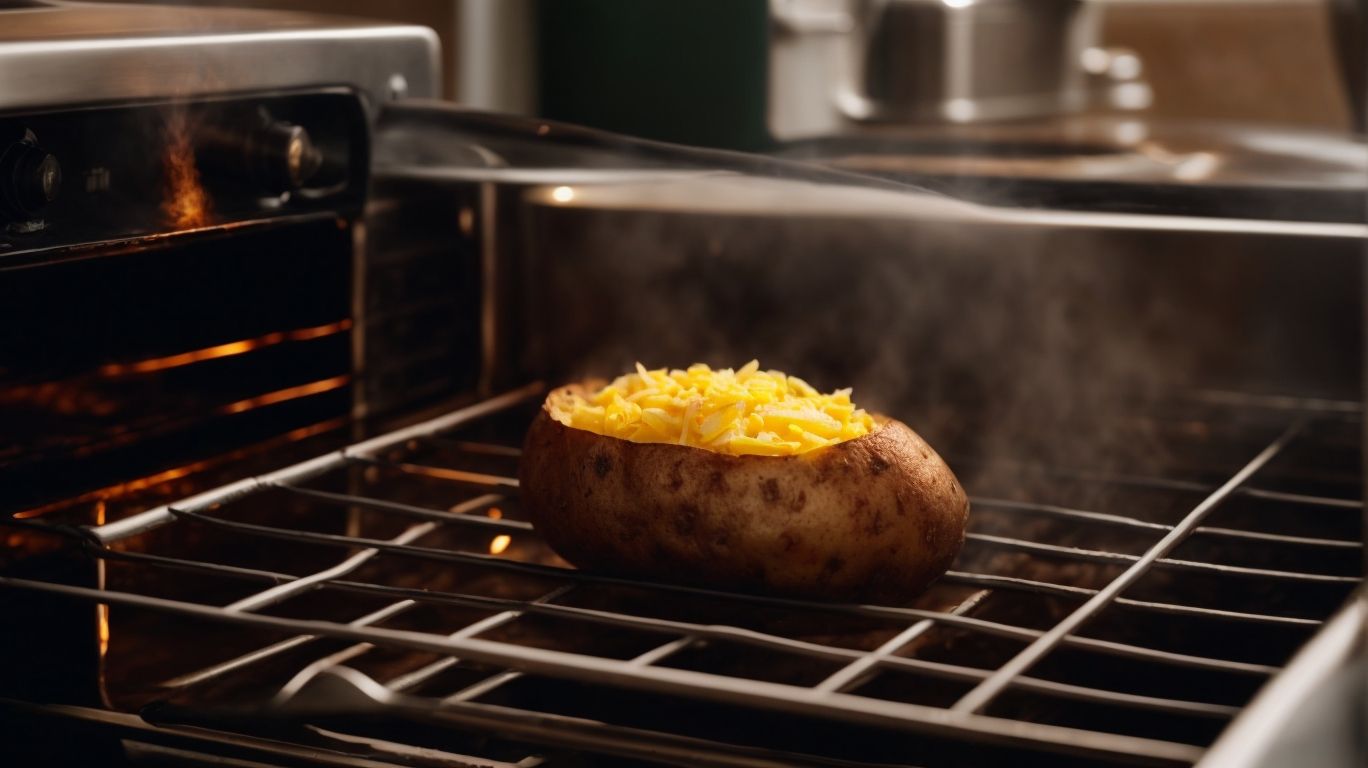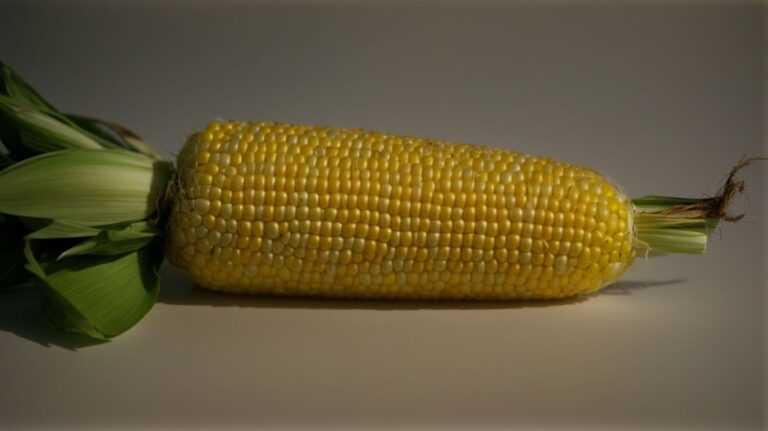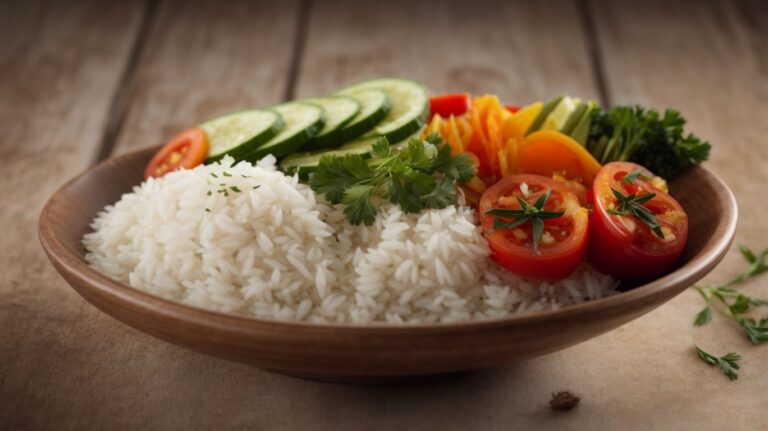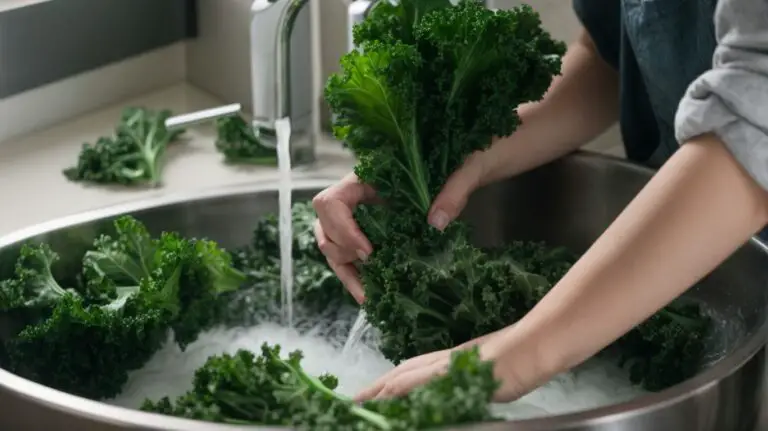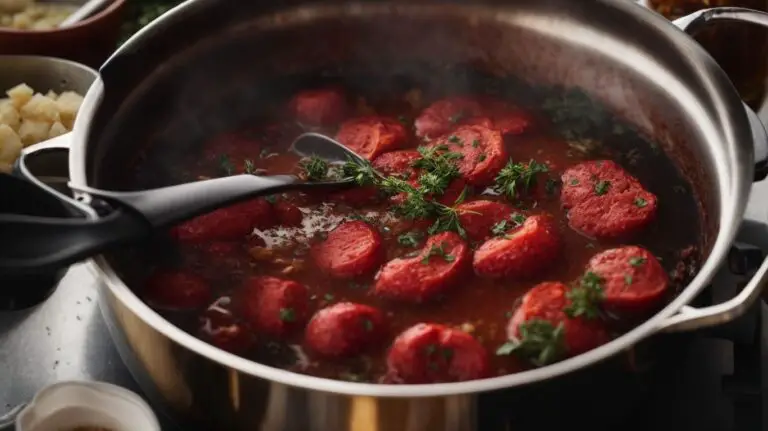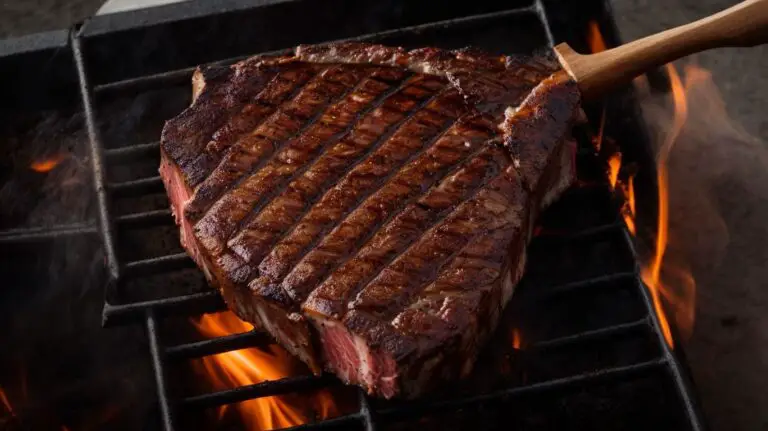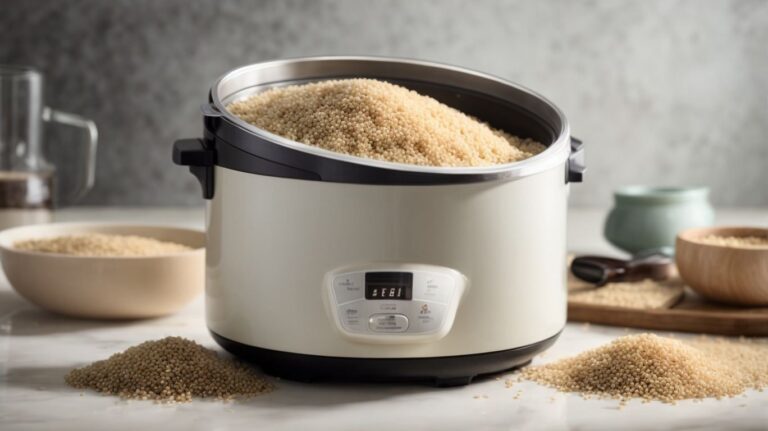How to Cook Jacket Potato Without Foil?
Are you looking to elevate your jacket potato game?
In this article, we will discuss the ins and outs of cooking jacket potatoes without foil.
From preventing sogginess to achieving the perfect texture, we will explore why ditching the foil is the way to go.
We will also delve into different cooking methods such as baking in the oven, grilling on the BBQ, and cooking in a microwave.
Stay tuned for some expert tips and delicious topping ideas to take your jacket potatoes to the next level.
Key Takeaways:
What Is a Jacket Potato?
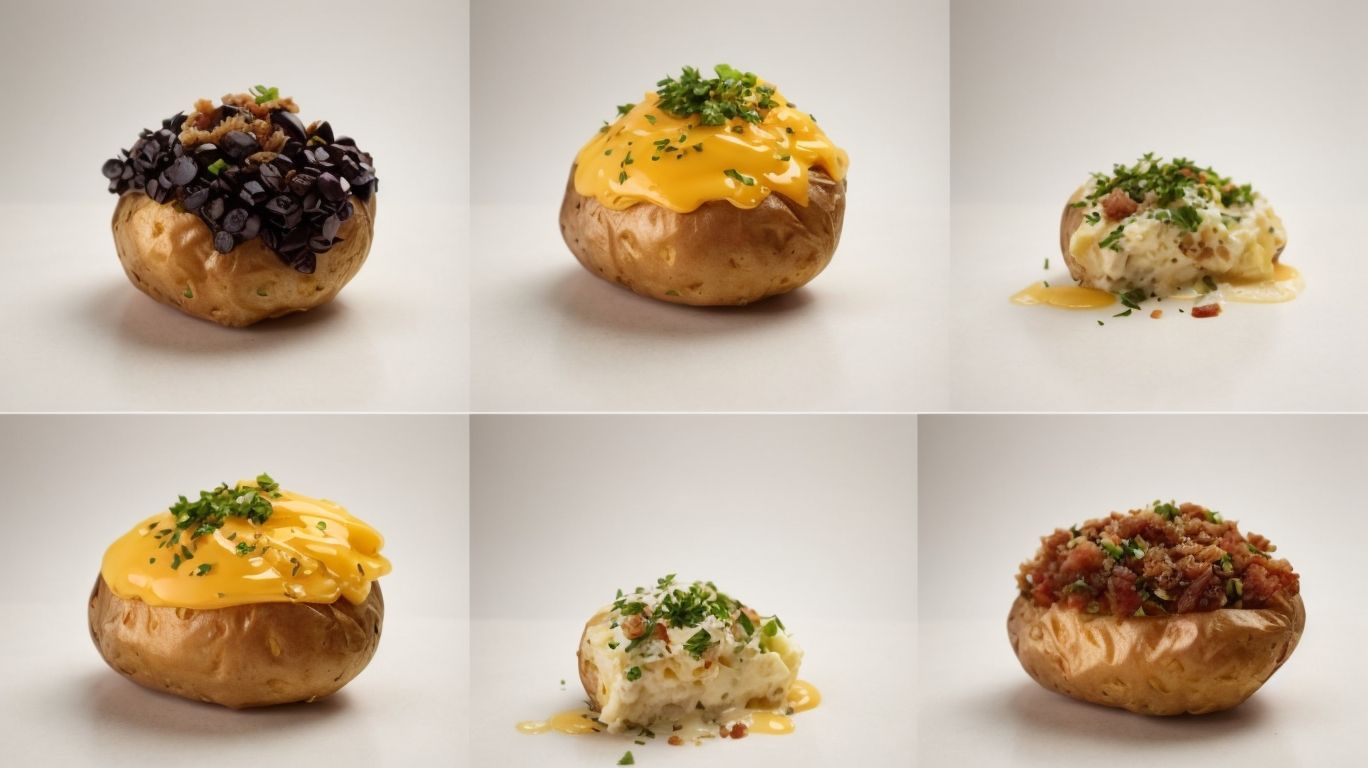
Credits: Poormet.Com – Nathan Taylor
A jacket potato is a simple yet delicious dish made by baking a whole potato until the skin is crispy and the inside is fluffy and soft.
One of the key characteristics of a jacket potato is its contrast in textures – the crispy skin providing a satisfying crunch as you bite into it, revealing the light and fluffy insides that practically melt in your mouth.
To prepare a jacket potato, start by washing and drying the potato thoroughly. Then, poke it with a fork a few times to allow steam to escape during baking. Next, rub the potato with olive oil and sprinkle it with salt before placing it in the oven to bake until it is fully cooked. Once ready, you can cut the baked potato open, fluff up the insides with a fork, and add various toppings such as butter, sour cream, cheese, or bacon bits to enhance its flavor.
Why Should You Cook Jacket Potatoes Without Foil?
Cooking jacket potatoes without foil offers several benefits, including preventing sogginess, improving texture, and eliminating any risk of toxicity from foil.
When you cook jacket potatoes without foil, the skin gets crispy and delicious, adding a delightful contrast to the soft interior. This method also allows the natural flavors of the potato to shine through, without being altered by the presence of foil. Cooking without foil results in a more environmentally friendly approach, reducing waste and promoting sustainability.
By avoiding the use of foil, you also avoid the potential health concerns associated with aluminum exposure. This can be particularly beneficial for individuals looking to minimize their intake of metals from cooking vessels and utensils. Opting to cook jacket potatoes without foil not only enhances the culinary experience but also contributes to a healthier and safer cooking environment.
Prevents Sogginess
One key reason to cook jacket potatoes without foil is to ensure that the skin becomes wonderfully crispy while the insides remain delightfully fluffy.
When jacket potatoes are wrapped in foil, they tend to trap moisture, leading to a soft and soggy texture, rather than the desired contrast between the crunchy skin and the light, fluffy flesh. By omitting the foil, the potatoes are able to breathe and the skin crisps up beautifully, creating that satisfying crunch when you take a bite.
Without the foil barrier, the potatoes are exposed to direct heat, aiding in the caramelization of the skin, adding a delicious depth of flavor and color to the overall dish. This method truly allows the natural flavors of the potato to shine through, enhancing the overall culinary experience.
Better Texture
By skipping the foil, you can enjoy a jacket potato with a perfect contrast of crispy skin on the outside and fluffy insides within.
When jacket potatoes are wrapped in foil, they tend to steam inside, resulting in a softer skin. Omitting the foil allows the skin to crisp up beautifully during baking, creating that delightful crunch as you bite into it. This cooking method not only intensifies the flavor but also preserves the natural texture of the potato. The contrast between the crunchy exterior and the soft, pillowy insides is what makes this classic dish so beloved by many potato enthusiasts.
No Risk of Toxicity
Avoiding foil when cooking jacket potatoes eliminates any potential risk of toxicity that may arise from using foil in direct contact with food.
When foil comes into direct contact with certain types of food, especially those high in acidity, it can leach aluminum into the food. Aluminum exposure has been linked to several health risks, including Alzheimer’s disease. By opting for alternative cooking methods, such as baking potatoes without foil, you can minimize the chances of ingesting harmful substances.
Without foil, you also reduce the risk of accidental burning or scorching due to improper foil usage, which can lead to potentially hazardous chemical reactions with food. Cooking the potatoes directly on the oven rack can promote better air circulation, resulting in a perfectly crisp skin without compromising on safety.
What Are the Different Ways to Cook Jacket Potatoes Without Foil?
Jacket potatoes can be cooked without foil using various methods such as baking in the oven, grilling on the BBQ, and cooking in a microwave.
When baking jacket potatoes in the oven, start by washing the potatoes, patting them dry, and piercing them with a fork to allow steam to escape during cooking. Rub the potatoes with oil and sprinkle with salt before placing them directly on the oven rack.
For BBQ grilling, wrap the cleaned potatoes in aluminum foil, then place them on the grill, turning occasionally until they are soft and cooked through.
On the other hand, for microwave cooking, pierce the potatoes and place them on a microwave-safe dish, cooking on high for about 8-10 minutes, turning halfway through to ensure even cooking.
Baking in the Oven
Baking jacket potatoes in the oven without foil is a popular method, resulting in a crispy skin and a fluffy interior.
Preheat your oven to a high temperature, usually around 400°F to 450°F to ensure that the potatoes cook thoroughly and achieve that desired crispiness. To kickstart the cooking process, scrub the potatoes clean under cold water, poke a few holes using a fork or knife to allow steam to escape during baking, and then rub them with olive oil and sprinkle salt or your favorite seasoning for added flavor.
Now, place the prepared potatoes directly on the oven rack or a baking sheet lined with parchment paper. The direct heat will help the skin crisp up rather than steaming with foil. Bake them for about an hour, turning them halfway through to cook evenly.
Grilling on the BBQ
Grilling jacket potatoes on the BBQ without foil adds a smoky flavor and allows for creative topping options.
When grilling jacket potatoes directly on the BBQ grates, the heat and flames interact with the potato skin, creating a charred and crispy exterior while preserving the fluffy interior. This method enhances the natural flavors of the potato, infusing them with a subtle smokiness that complements a variety of toppings, from the classic sour cream and chives to decadent options like melted cheese and bacon bits. The versatility of toppings paired with the distinct smoky flavor of the grilled potato elevates this simple dish to a gourmet treat on your backyard grill.
Cooking in a Microwave
Cooking jacket potatoes in a microwave without foil is a convenient and speedy method for those looking for a quick meal option.
By microwaving jacket potatoes without foil, you can significantly reduce the preparation time while still achieving a delicious and fluffy interior. Simply rinse the potatoes, pierce them with a fork, and place them directly on the microwave turntable. Cooking them on high for about 10-12 minutes (depending on the size of the potatoes) allows for quick and efficient cooking. This method not only saves time but also ensures that the potatoes retain their natural flavors and nutrients without the need for additional foil wrapping.
What Are Some Tips for Cooking Jacket Potatoes Without Foil?
To achieve the perfect jacket potato without foil, follow these tips: choose the right potatoes, prick them before cooking, use a baking tray, season well, and allow them to rest before serving.
When selecting your potatoes, opt for starchy varieties like Russets or Maris Piper for that fluffy interior we all love in a jacket potato.
Before you pop them in the oven, be sure to prick the potatoes with a fork to allow steam to escape during baking, preventing them from bursting.
Regarding seasoning, don’t be shy! Rub olive oil and a generous amount of salt on the skin for a crispy finish.
After baking, resist the temptation to dig in immediately; let the potatoes rest for a few minutes to ensure the flavors have settled.
Choose the Right Potatoes
Selecting the right potatoes, such as Russets with high starch content, is crucial for achieving the desired texture in your jacket potatoes.
Choosing the correct type of potatoes ensures that your jacket potatoes turn out fluffy on the inside and crispy on the outside. Russet potatoes, known for their high starch content, are ideal for achieving that perfect balance. The high starch content in Russets helps them absorb more moisture during cooking, resulting in a light and fluffy interior. It’s important to avoid waxy potatoes like Yukon Gold or red potatoes, as they contain less starch and can make your jacket potatoes dense and waxy. By selecting the right potato variety, you can elevate the texture and overall taste of your jacket potatoes.
Prick the Potatoes Before Cooking
Piercing the potatoes with a fork before baking helps them cook evenly and prevents them from bursting during the cooking process.
When you poke holes in the potatoes, it allows steam to escape, which is crucial for ensuring even cooking. Without these tiny punctures, the steam builds up inside the potato and can cause it to burst open, leading to an unevenly cooked dish.
This technique is particularly important for recipes that require baking or roasting potatoes. By creating these small holes, you are essentially creating vents that release pressure, resulting in a perfectly cooked potato with a fluffy interior.
Use a Baking Tray or Foil-Lined Baking Dish
Utilize a baking tray or a foil-lined baking dish to support the potatoes in the oven and prevent any drips or messes on the oven rack.
When choosing a baking tray, opt for a sturdy one that can withstand high oven temperatures without warping. A heavy-duty, non-stick baking dish is ideal for easy cleaning and maintenance.
Ensuring that the tray or dish is the right size for the potatoes helps in even cooking. Using a raised edge baking tray can prevent any olive oil or seasoning from spilling out onto the oven floor.
Season the Potatoes Before Cooking
Seasoning the potatoes with a generous sprinkle of salt and a drizzle of olive oil before baking enhances their flavor and adds a delicious savory note.
Regarding preparing the perfect jacket potato, proper seasoning is key. Salt not only helps bring out the natural flavors of the potato but also helps in ensuring even cooking throughout. The olive oil, with its richness and aroma, not only adds a delightful taste but also aids in creating that crispy exterior that everyone loves.
By allowing the salt and olive oil to seep into the nooks and crannies of the potato skin, you are essentially infusing each bite with layers of flavor that will have your taste buds thanking you. Not to mention, the olive oil adds a touch of richness that elevates the overall texture of the potato.
Allow Potatoes to Rest Before Serving
Let the jacket potatoes rest for a few minutes after baking to allow the internal temperature to stabilize and the flavors to meld together.
When you let the jacket potatoes rest, it gives the heat a chance to distribute evenly throughout the potato, ensuring a consistent texture and taste. This resting period also allows the flavors to intensify as the ingredients mingle and settle. The process of resting helps in achieving the perfect serving temperature, ensuring that your jacket potatoes are not too hot or too cold when enjoyed. By patiently waiting for this crucial step, you are maximizing the culinary experience and savoring every bite of your delicious creation.
What Are Some Delicious Toppings for Jacket Potatoes?

Credits: Poormet.Com – Harold Thompson
Enhance your jacket potatoes with a variety of delicious toppings such as classic butter and cheese, baked beans, tuna and sweetcorn, pulled pork with BBQ sauce, and guacamole with salsa.
For those seeking a burst of flavor, consider adding tangy sour cream with chives, spicy jalapenos, or crispy bacon bits to your potato.
Alternatively, elevate your dish with a Mediterranean twist by topping it off with refreshing tatziki, cherry tomatoes, and feta cheese.
If you’re feeling adventurous, a combination of sriracha mayo, avocado slices, and black beans can offer a unique and zesty experience.
Remember, the secret to a perfect jacket potato lies in the balance of textures and flavors, so don’t hesitate to get creative with your toppings.
Classic Butter and Cheese
A classic topping for jacket potatoes is a generous dollop of butter melting into the fluffy insides, followed by a sprinkle of grated cheddar cheese for a rich and indulgent treat.
This traditional combination of butter and cheese creates a symphony of flavors that elevates the humble jacket potato to a culinary delight. As the butter slowly melts, it seeps into every nook and cranny of the potato, adding a velvety richness to each bite. The sharpness of the cheddar cheese cuts through the buttery goodness, providing a savory contrast that enhances the overall taste.
The marriage of these two ingredients results in a gooey, creamy texture that coats the potato, making each forkful a comforting and flavorful experience. The salty notes from the cheese perfectly complement the creamy butter, creating a harmonious blend of indulgent flavors that appeal to both young and old palates alike.
Baked Beans and Cheese
For a hearty and comforting topping, try a generous serving of baked beans paired with melted cheddar cheese on your jacket potatoes for a satisfying meal.
When the warm, creamy cheese blends with the savory richness of the baked beans, it creates an explosion of flavors that perfectly complements the fluffy texture of the jacket potato.
This classic combination not only offers a hearty and delicious option but also provides a balanced meal with proteins, fiber, and essential nutrients.
With just a few simple ingredients, you can elevate your jacket potato game to a whole new level and satisfy your cravings for a wholesome, filling meal.
Tuna and Sweetcorn
Add a light and refreshing twist to your jacket potatoes with a mix of flaked tuna and sweetcorn, creating a zesty and delightful topping for a quick and easy meal.
It’s a wonderful combination that not only adds a burst of flavor but also provides a satisfying and nutritious element to your dish. The marriage of the savory flaked tuna with the sweet crunch of corn brings a perfect balance to each bite. The simplicity of preparing this topping makes it ideal for those busy weeknight dinners when you want something delicious without spending too much time in the kitchen. With just a few simple ingredients, you can elevate your jacket potato to a gourmet experience.
Pulled Pork and BBQ Sauce
Indulge in a smoky and savory treat by piling your jacket potatoes with succulent pulled pork and tangy BBQ sauce, creating a mouthwatering barbecue-inspired meal.
If you are a fan of rich, smoky flavors, the combination of tender pulled pork and BBQ sauce is a match made in heaven. The slow-cooked pork, infused with that signature smokiness, pairs perfectly with the tangy sweetness of the BBQ sauce, creating a burst of indulgent flavors with every bite. The juicy texture of the pulled pork adds a satisfying element to the creamy flesh of the jacket potato, adding depth and complexity to each mouthful.
This dynamic duo of juicy pork and zesty BBQ sauce not only enhances the overall taste of the dish but also elevates the humble jacket potato into a culinary delight. It’s a tantalizing blend of savory and sweet, with the comforting warmth of the potatoes complementing the boldness of the BBQ sauce.
Guacamole and Salsa
For a burst of freshness and vibrant flavors, top your jacket potatoes with creamy guacamole and zesty salsa, creating a Mexican-inspired dish that is both satisfying and delicious.
The combination of guacamole and salsa adds a delightful contrast of textures and tastes to the humble potato, offering a rich and tangy experience with every bite. The creamy avocado base of the guacamole complements the chunky tomato and chili elements of the salsa, creating a harmonious balance of flavors. These fresh toppings not only enhance the overall dish but also bring a touch of cultural authenticity with their traditional Mexican roots.
Frequently Asked Questions
How to Cook Jacket Potato Without Foil?
What are the benefits of cooking jacket potatoes without foil?
Cooking jacket potatoes without foil allows for a crispier skin and prevents the potatoes from becoming soggy.
How do I prepare the jacket potatoes for cooking without foil?
Wash and dry the potatoes, then pierce them with a fork a few times to allow steam to escape while cooking.
Can I still add toppings to the jacket potato without foil?
Absolutely! You can add your favorite toppings, such as butter, cheese, and bacon, before or after cooking the jacket potatoes without foil.
How to Cook Jacket Potato Without Foil: Tips and Tricks
How long does it take to cook a jacket potato without foil?
It typically takes 50-60 minutes to cook a jacket potato without foil, but the cooking time may vary depending on the size and type of potato.
Can I use the oven or grill to cook jacket potatoes without foil?
Yes, you can cook jacket potatoes without foil in the oven or on the grill. Just be sure to place them on a baking sheet or foil-lined tray to catch any drippings.
What are some alternative methods for cooking jacket potatoes without foil?
You can also cook jacket potatoes without foil in a slow cooker or in a campfire. Just make sure to wrap the potatoes in foil before placing them in the slow cooker or campfire.

